We entered Guatemala after our short stay in Belize not knowing quite what to expect. This is somewhat normal when entering a new country – particularly when most of the information you’ve gotten about the country was collected by backpacking friends the better part of a decade ago. Would it be chicken buses, crap roads, and rural poverty (e.g. Laos-like)? Or would it be, like Mexico, a relatively pleasant surprise?
It ends up that it’s kind of a mix. While we later saw outright favelas in parts of Guatemala City, the rural, sweltering north of Guatemala is living above that standard, at least in the locations we saw by road. In other words, in Petén, the houses are still cement block and largely unfinished, the chickens, pigs and dogs still roam freely, but there are some restaurants, grocery stores, and even a very pleasant colonial island city in Flores.
We first stayed in an airbnb house associated with a hotel in El Remate, on the east side of Lake Petén Itza. The main benefits here, besides self-catering, were proximity to the Tikal ruins and proximity to the lovely lake. Each night when we were here, we trooped down to a dock and hung out for the sunset – including a swim, which was much welcomed after the stupor-inducing heat and humidity. There were always a horde of local kids there, joined by a pack of adults on occasion. But clearly the local kids live in that lake. Not much of a problem here of not knowing how to swim, I guess!

Of course, in a new country, you can’t just hang out at the lake – there are always practical things that need to be done, like getting out local currency, getting local insurance, getting a prepaid SIM card, etc. For that we headed to the state capital of Flores. We quite liked it – Flores is a tiny colonial island city – but to do anything practical (like, say, find an ATM) you had to leave the island and go to the mainland town of Santa Elena – a much more representative Latin American city with sprawl, malls, markets, blaring music and impossible to decipher addresses.
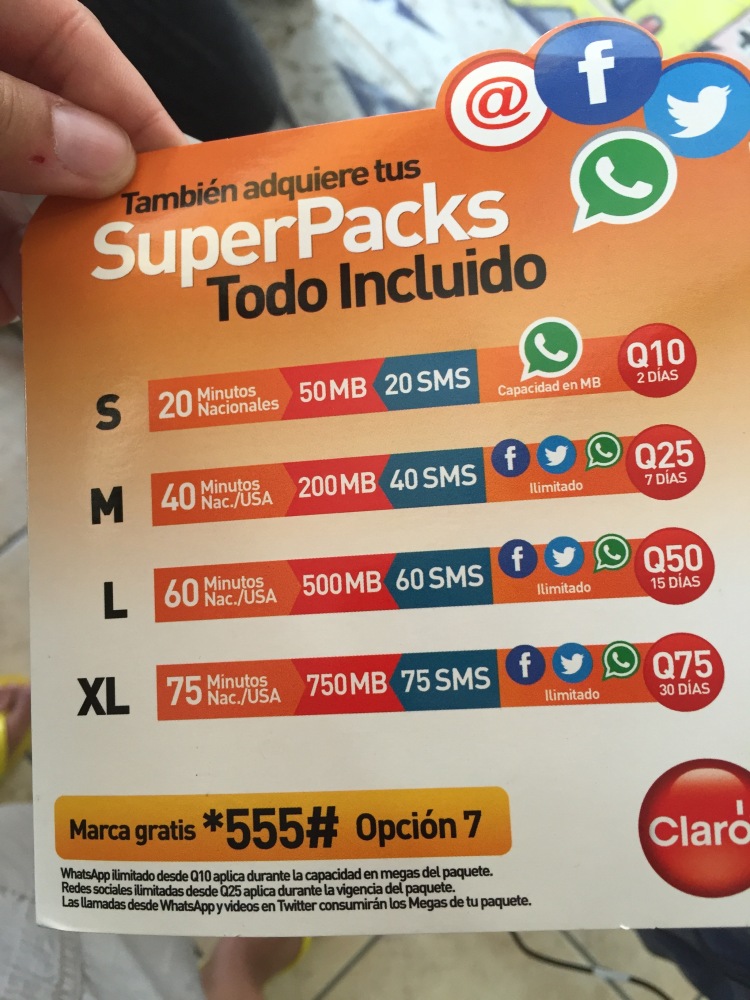
After much consternation, searching and an emergency trip to an ATM to pay for lunch (whoops!), we found the local insurance office and obtained 3rd party liability insurance that would serve us through Guatemala, El Salvador, Honduras, Nicaragua and Costa Rica. (About a buck a day for 90 days, which seems reasonable.)
Guatemalan addresses are a bit like addresses in Queens – once you know the system, it gets a lot easier, but the lack of house numbering can still tie you up for a while. “5a Avenida A 6-34 Zona 1” is meaningful information indicating “5th Avenue, but not the main one, the parallel one (A) right next to it, somewhere on the block between 6th and 7th Streets, in Zone 1 of the city.” (There could also be an entirely separate street of the same name in Zone 2, or it could be a continuation.) This is totally different from the Mexican system, btw, which was much more like what we’re used to in the Western USA with a N-S-E-W grid around the main square.
Admin taken care of, and groceries purchased, we lazed around the rest of the first full day but got up early the second to go to Tikal. In many ways the most impressive ruin that we have yet visited, Tikal has some of the tallest Mayan architecture that’s accessible to mere mortals.

There’s only one pyramid there you can really go up, and it’s actually done with an external wooden staircase. I’m sure that would have been impressive to see at dawn, but we’re simply not that disciplined – we woke at 5:30 and were exploring from 7am onwards.

Tikal is quite spread out, and our 3-4 hours there would have registered on the shorter end of a the visit scale. There are a few main complexes relatively close to each other, then a couple of satellites further away. We hit one of the satellites on the way out, unaware that our guide book warned that, due to Temple VI’s remoteness, there were reports of robberies there. Whoops! Nothing happened to us, but be careful out there.

After this, and another sweltering afternoon, another swim was merited. Interestingly, a couple of the nights were were there, we ran into a girl whose father is Swiss. She said that her mom was the “second family” – no idea whether this was a scandalous affair/divorce or an amicable burnout-related departure from CH, but we found it entertaining to speculate.
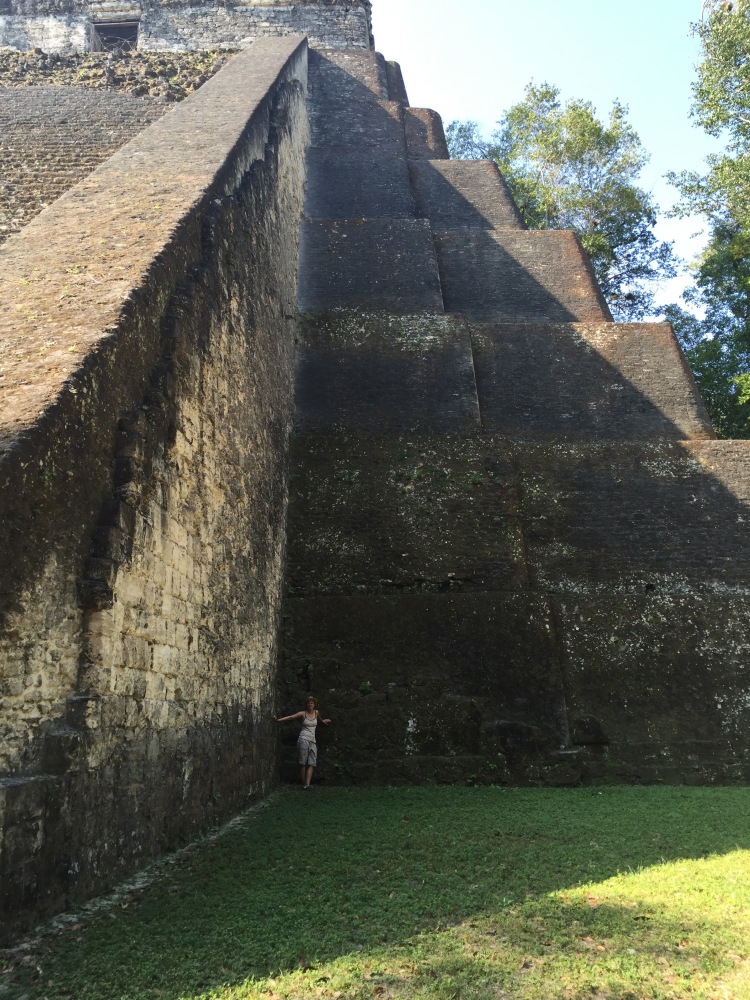
Our mission to see Tikal accomplished, we set out towards our next destination – Lanquin. But first, we had to drive there – and this drive would probably qualify as our first uniquely Guatemalan adventure.
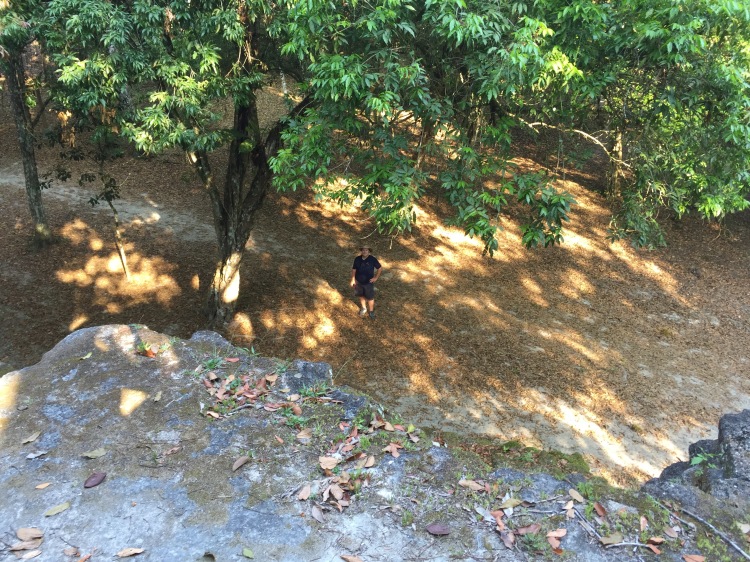
The road from Flores to Sayaxché was largely in good shape. But we would soon discover why none of the buses we saw on that road indicated destinations further than Sayaxaché: there is no bridge over the Rio De La Pasion, just a rough looking car ferry and some launch boats. The buses dump their people on one side, and other buses pick up at the other. (Shades of Asia – well, okay, the ferry we took in Laos was replaced by a bridge officially, but only because the Japanese government paid for it.)
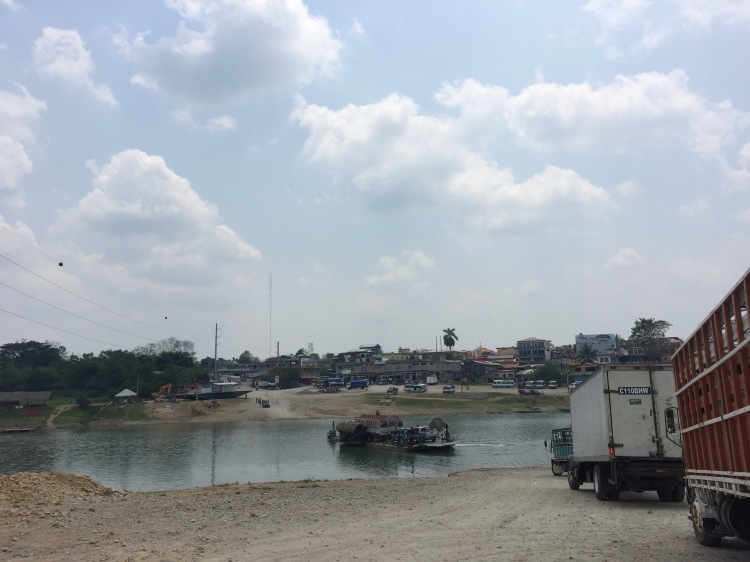
Thankfully we made the second ferry across (after about half an hour waiting), and were able to proceed at a decent clip to Las Pozas, though the road in this segment was more potholed. After a break for lunch, and some of our first Guatemalan food (why do they put cole slaw on their tacos?!?), we drove on towards the junction at San Antonio Las Cuevas.

This is where it all went a bit pear-shaped, I’m afraid. Our map, from Reise Know-How – a company with excellent reviews – indicated that the road via Raxruhá and Chipam to Pajal and Lanquin was the main route, and that the road via Chisec was a lesser grade. Turns out – not so much, the situation is actually quite the reverse. Of course, we didn’t know this until much later, when we were relating this story to Guatemalans we subsequently met.
Meanwhile, the road starts out as freshly paved, but after the first village, it effectively reverts to a wide, rocky field which allowed a maximum speed of around 15kph, and an average of probably 10kph. A truly miserable slow drive, although the views were quite spectacular. The villagers clearly were happy to see some lost tourists, because the kids came shouting “GRINGOS” out of nearly every house, and were happy to be waved at.
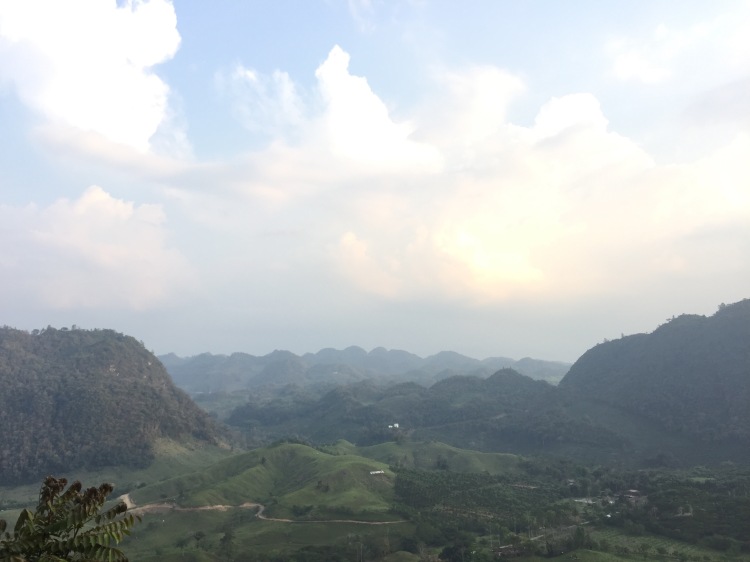
At a certain point on this rock field, we noticed that the air conditioning in the car had given up. No amount of button pushing would revive it, so we rolled down the windows and started eating dust like true locals.
UNLIKE true locals, we were forced to pay 25 Quetzales by a man and his son who claimed to be fixing holes in the road. Each and every one of these amateur tollbooth guys (and we have seen quite a few) are full of effluent, but mostly they don’t ask for much, and they have been generally low key about it. Not this guy – a true highwayman at heart. We eventually handed over our 25 Quetzales (okay, this is like $3.50, it could be worse) and continued bumping sweatily along.
The road got worse – narrower – before it got better, and only the last few kilometers were truly graded. All told, the 20km took about two hours. The pavement didn’t return until just before the turnoff for Lanquin, and the road to Lanquin was only marginally better than the previous 20km had been – however the average speed did go up to about 25kph.
We arrived, quite exhausted, at the El Retiro hostel – and, upon arriving in our (thankfully private!) room, promptly heard some American backpackers having a maximum volume fight in the cabin downhill from ours. Not even their friend who was cultivating a look somewhere between Jesus, the Dude, and Santa Claus (drug use, robe and beard included) could apparently keep the peace between those two girls. Yes, we were now in gringo backpacker land. We drowned our sorrows in liter bottles of the local Brahva beer and went early to bed.
I’ll save the rest of the Lanquin/Semuc Champey experience for the next post, but as a footnote, I wanted to mention that we also got a slow leak flat tire somewhere along the way on this day (not discovered until later the next day). More on this later.